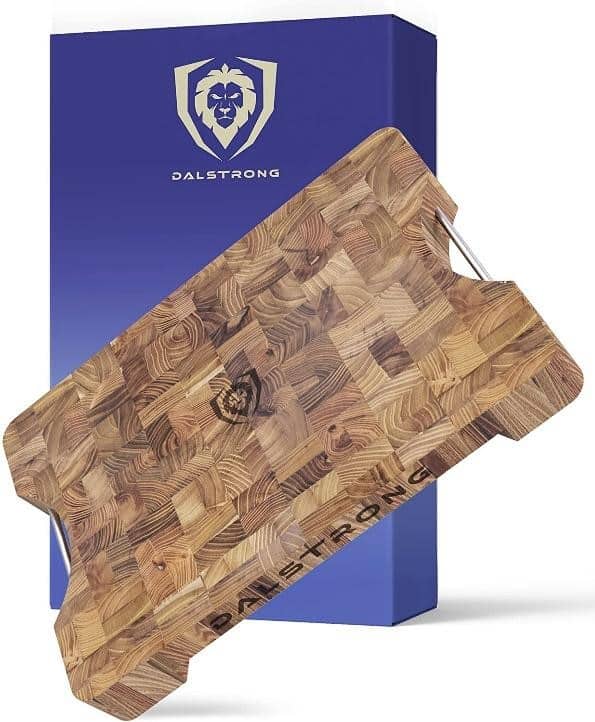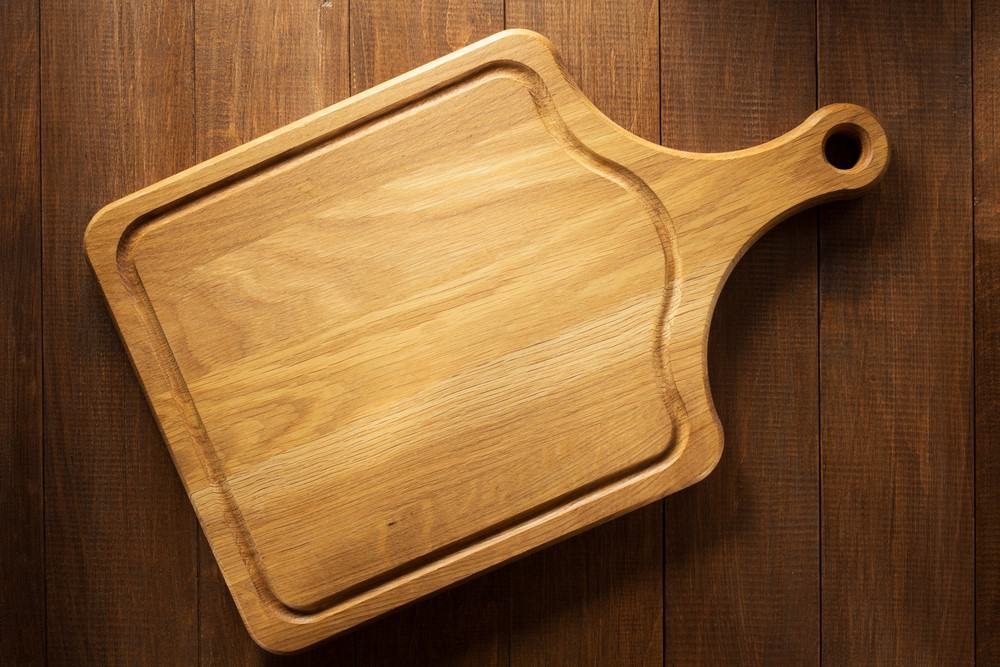Quality cutting boards typically have some heft, which is how they stay firm and stable on the worktop as you deal with tough cuts. Many of them have handles that make them easy to pick up, move around or even flip when you want to use their reverse side. The handle also enables you to hang the board to dry off the cooking surface, which is hygienic and allows the board to dry all around.
Handles enhance the cutting board’s functionality and their impact is more pronounced the bigger or heavier the board gets. Seasoned chefs know this, and the demand has made manufacturers develop different designs for cutting boards with handles over the years. The choice can be hard to make if you don’t know what to look for.
We scoured the internet for tricks from kitchen and equipment experts on choosing a cutting board with a handle when we realized we needed a larger board. We are happy to share what we learned in this article, where we summarize our findings in five basic tricks that cut across all types of cutting boards.
I got a John Boos Cutting Board as a gift, and it is worth the hype; it is a very sturdy, beautifully crafted board that I recommend. I purchased the oil and cleansing products to go with it to maintain and preserve the wood.
How To Choose A Cutting Board With Handle
1. Getting the Right Size of Cutting Board with Handle for Your Cutting Needs
The appropriate size cutting board makes cutting easier and much safer. Go for one that provides sufficient space for your ingredients and lets you maneuver while cutting. On the other hand, the bigger the board, the more counter space you need, and the more it will cost to buy. You must balance these considerations to get the most practical cutting board for your circumstances.
A small board is sufficient for cutting strawberries, lemons, or other small items, which you can execute with a small paring knife. When you need to deploy your chef’s knife, consider it a task for a larger cutting board.
A simple trick professional chefs use is laying their proposed knife diagonally on the board to see how it will fit. There should be at least two inches to spare on either side of the knife for the cutting board is sufficient to accommodate the envisioned task. The right board for an eight-inch chef’s knife will have a cutting surface measuring approximately twelve inches diagonally.
Also, consider what you will be cutting on the cutting board. You need more space to make mirepoix with multiple ingredients like celery, carrots, onions, and other vegetables than to cut up small fruits and vegetables. You need space to keep some cut-up pieces on the side as you work on the rest. Some ingredients, like pineapples and sweet potatoes, are also naturally large and will require more space.
2. Establishing the Sanitary Properties of The Cutting Board
The kitchen is a hotbed of microbes and dirt that we should not consume, but unfortunately, they come from the same ingredients we use to make our food. Because many of these ingredients will pass through the cutting board and you will be using the same knives, it is important to get the most sanitary option when picking a cutting board with a handle.
Think about how quickly they will get dirty, their tendency to hide dirt and harbor pathogens, and how easy the cutting boards are to clean when establishing their sanitary qualities. We can’t discuss this subject without mentioning the plastic versus wood cutting board debate.
Many people believe that plastics are safer and more sanitary because they don’t have pores for dirt and microbes to hide in. They are dishwasher friendly and can survive harsh detergents to eliminate stubborn contaminants.
While these are all valid points, a plastic cutting board has shortcomings that might lead you to wood. Their surfaces suffer more damage from knives than wooden cutting boards, and these cuts and grooves don’t heal up as they would on wood. They create permanent spots for dirt and microbes to hide, and the boards lose their aesthetic appeal over time.
Proper care ensures a quality wooden cutting board with a handle can be more sanitary than a plastic board. Apart from the self-healing properties that help wooden cutting surfaces repair, some wood species like teak have inherent antimicrobial properties that kill microbes or prevent their development. Wood surfaces can also be treated with food-grade oils to make them less porous so they won’t absorb microbes and humidity.
Consider bamboo cutting boards, which have the self-healing properties of wood to some extent and antimicrobial elements.
It is also good practice to use separate cutting boards for different classes of ingredients to prevent cross-contamination between ingredients. The USDA recommends, at the very least, having a separate cutting board for raw meat and foods which don’t require further cooking. You don’t want to dice your veggies or slice bread on the same board you just cut raw meat on. Cutting boards are color-coded depending on the usage in some instances.
You can purchase a chopping board set with different colors for different purposes or get another one to supplement what you already have.

3. Check for Strength and Durability
Hardwoods like maple, walnut, and cherry have a high density, making them harder and more durable than softwoods. It protects them from getting scored by a sharp knife, creating an uneven cutting surface. Avoid softwoods, like cedar and pine, which you will destroy with your knives.
You can restore wood when it gets damaged with common woodworking tools, extending its usable life. Plastic boards can hold out against frequent use, but they are not self-healing, so their marks tend to remain permanently. They have a shorter lifespan than wood in the long run.
4. Is the Cutting Surface Knife Friendly?
Quality chefs’ knives are pricier than cutting boards and are often more valued by the chef than the board. As much as we are going for a strong board that will not break down from handling knife cuts, it shouldn’t be so hard that it blunts the knives or exposes them to dents and kinks.
Wooden cutting boards also have hardness limits beyond which they will damage your knives. This is why we avoid hard materials like glass and some plastic boards. Wood hardness is measured in Janka units, the force required to embed a standard steel ball in the wood up to half its diameter. The ideal Janka for a good cutting board is between 1,000- and 2,000-pound-force units.
We recommend tightly grained surfaces because they are smooth and less abrasive to the knives’ edges.
The side of the lumber that makes the cutting surface significantly affects how the finished cutting board will turn out. End grain cutting surfaces are easier on the knife than edge grain surfaces. The knife’s blade will run between its fibers instead of against them. The resultant knife marks also heal better on these types of boards.
5. Aesthetic Appeal
Your cutting board should be eye-catching for all the right reasons. It will be a regular feature of your kitchen workspace for food prep and occasionally a part of the food presentation if you use it as a cheese board, serving board, charcuterie board, or serving tray. The aesthetic properties ideal for a cutting board depends on personal preference.
Lighter boards look better if engraved but will not hide stains effectively. Dark boards might appear dull but maintain their color longer.

Buy: DALSTRONG Lionswood Teak Cutting Board with Stainless-Steel Handles on Amazon
Summary
Analyze each feature with your own kitchen needs in mind. The amount of cutting space you need and the optimum hardness of the cutting board depend on what you will be cutting regularly but are limited by the available space and resources. No single feature on its own will be sufficient to make this judgment.
Watch equipment expert Adam Ried compare some heavy-duty cutting boards on America’s Test Kitchen to better understand how all these features come together when a professional makes the decision.
Last Updated on June 20, 2023 by John Siracusa









